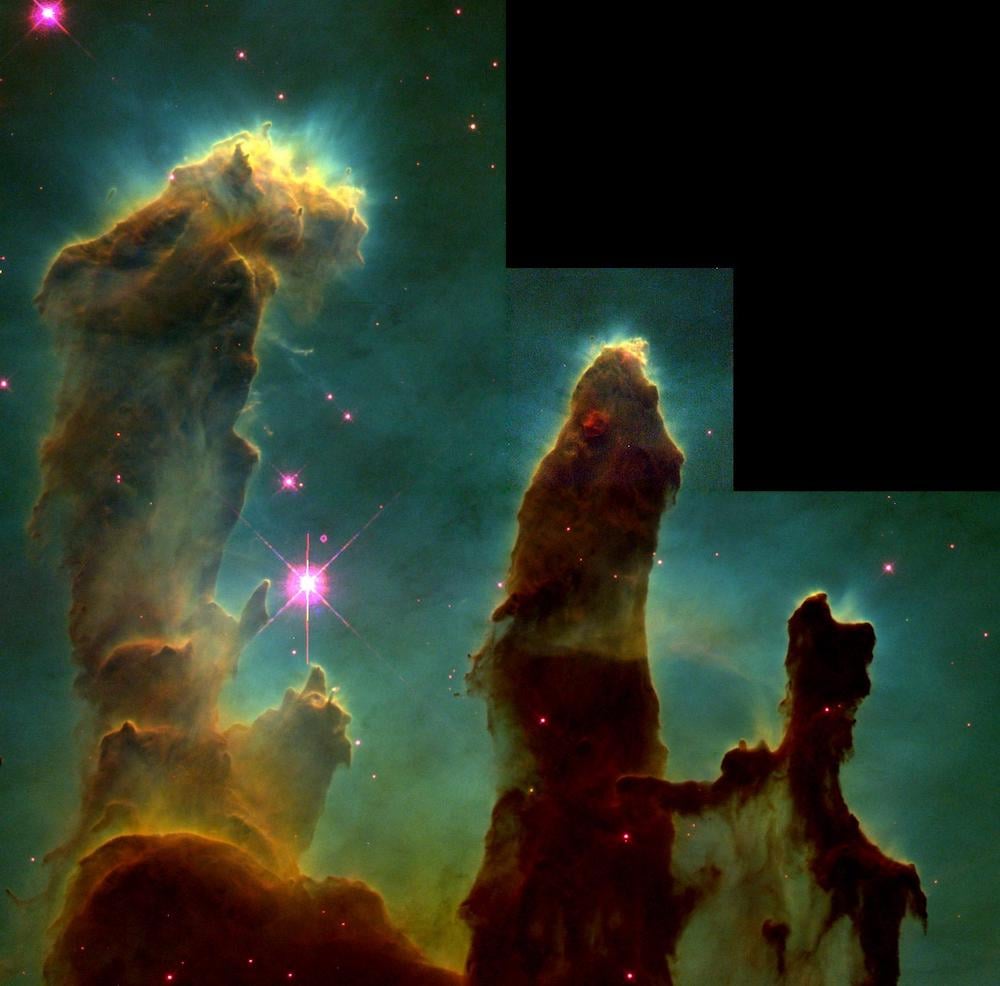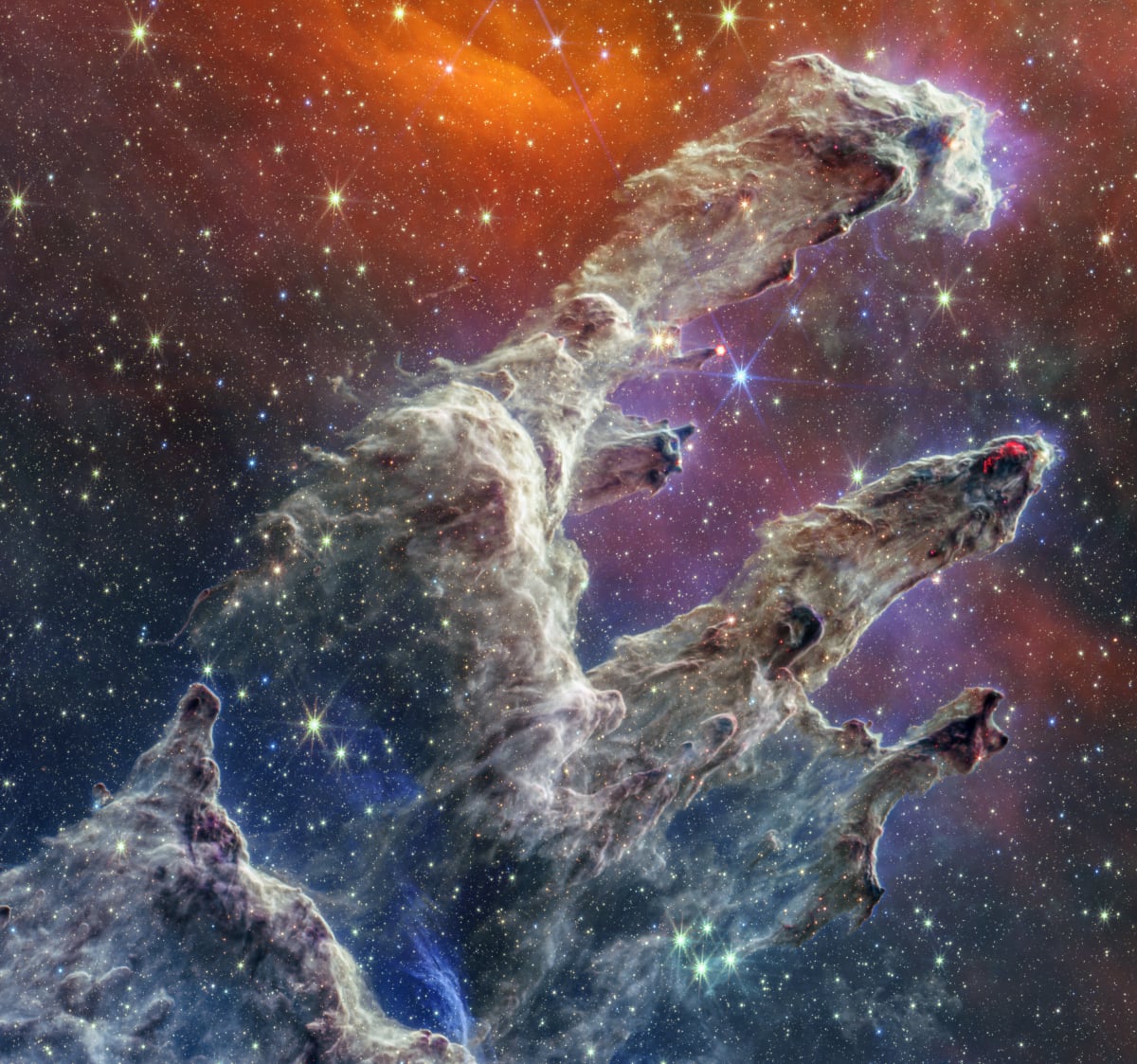The James Webb Space Telescope has just added a huge amount of detail to one of the most iconic space images of all time.
The stellar nursery dubbed the Pillars of Creation is a small region within M16, the vast Eagle Nebula, which lies 6500 light-years away. It's also blu-tacked to hundreds and thousands of teenage bedroom walls thanks to a 1995 Hubble Space Telescope image, which has gone on to be one of the most enduring of all its fabulous forays into deep space photography.

That original pictures is above. It was taken on April 1, 1995 with the Hubble Space Telescope Wide Field and Planetary Camera 2. The color image is constructed from three separate images taken in the light of emission from different types of atoms. Red shows emission from singly-ionized sulfur atoms. Green shows emission from hydrogen. Blue shows light emitted by doubly- ionized oxygen atoms.
The James Webb Space Telescope has added a shedload (technical term, trust us) of additional detail by combining images already released and taken with two separate cameras; its Near-Infrared Camera (NIRCam) and Mid-Infrared Instrument (MIRI).
A boatload (another technical term) of stars are now spread throughout the scene. The stars primarily show up in near-infrared light, thanks to the NIRCam. Near-infrared light also reveals thousands of newly formed stars; bright orange spheres that lie just outside the dusty pillars.
In mid-infrared light, the dust is on full display. MIRI showcases the layers of diffuse, orange dust that drape the top of the image, relaxing into a V. The densest regions of dust are cast in deep indigo hues, obscuring our view of the activities inside the dense pillars.

Dust also makes up the spire-like pillars that give the image its name, though in this image they look less like pillars and more like leaping animals: foam flecked horses in the sea or a plethora of jumping cats depending upon how your subconscious processes these things. Or goats.
Anyway, these young stars are estimated to be only a few hundred thousand years old, and will continue to form for millions of years. Also almost everything you see in this scene is local to the image. The distant universe is largely blocked from view both by the interstellar medium, which is made up of sparse gas and dust located between the stars, and a thick dust lane in our Milky Way galaxy.
And if you want to see the image in all its 7130 x 6675 glory, it's here. Coming to a teenage wall near you soon...